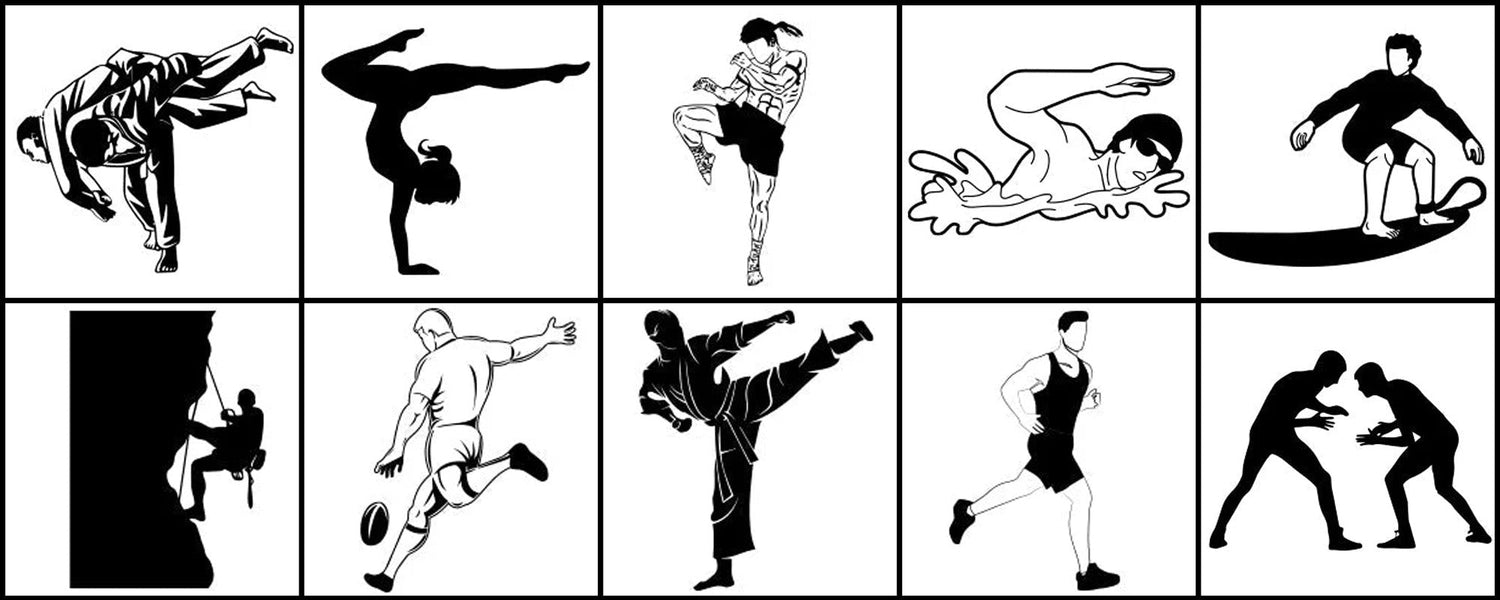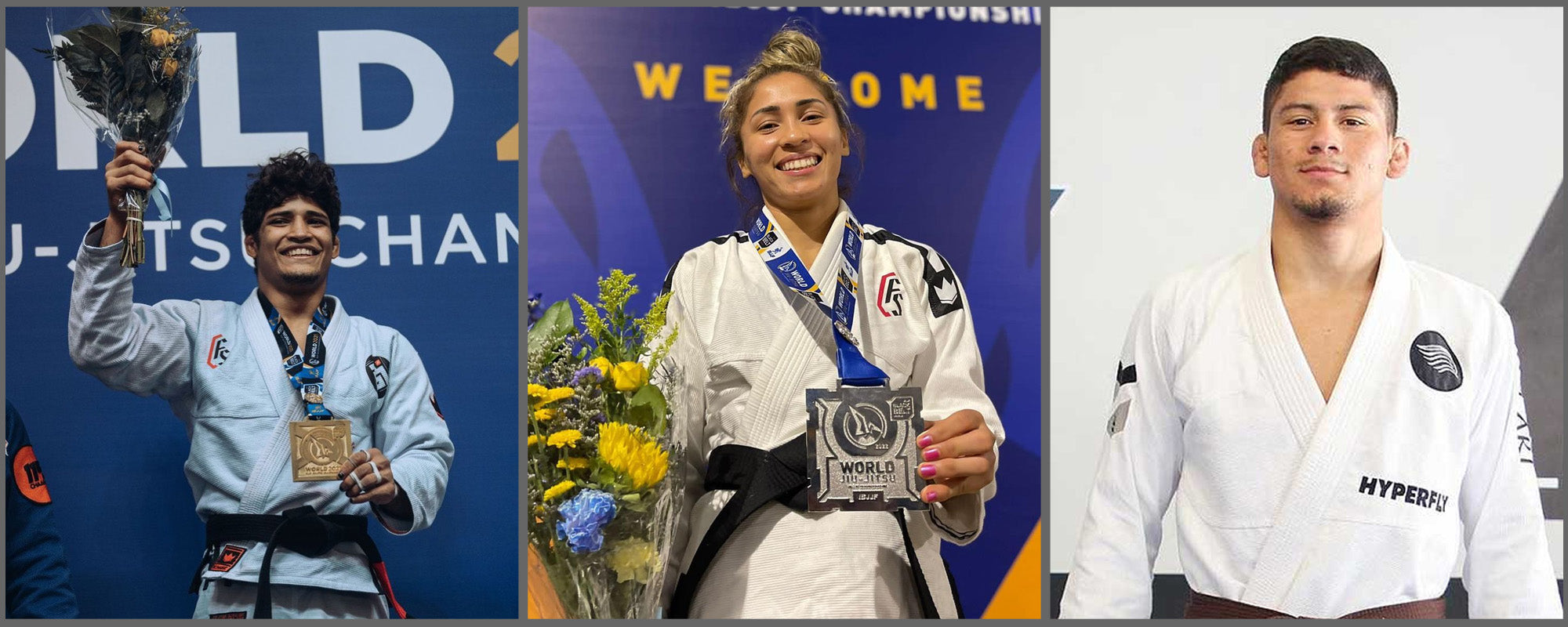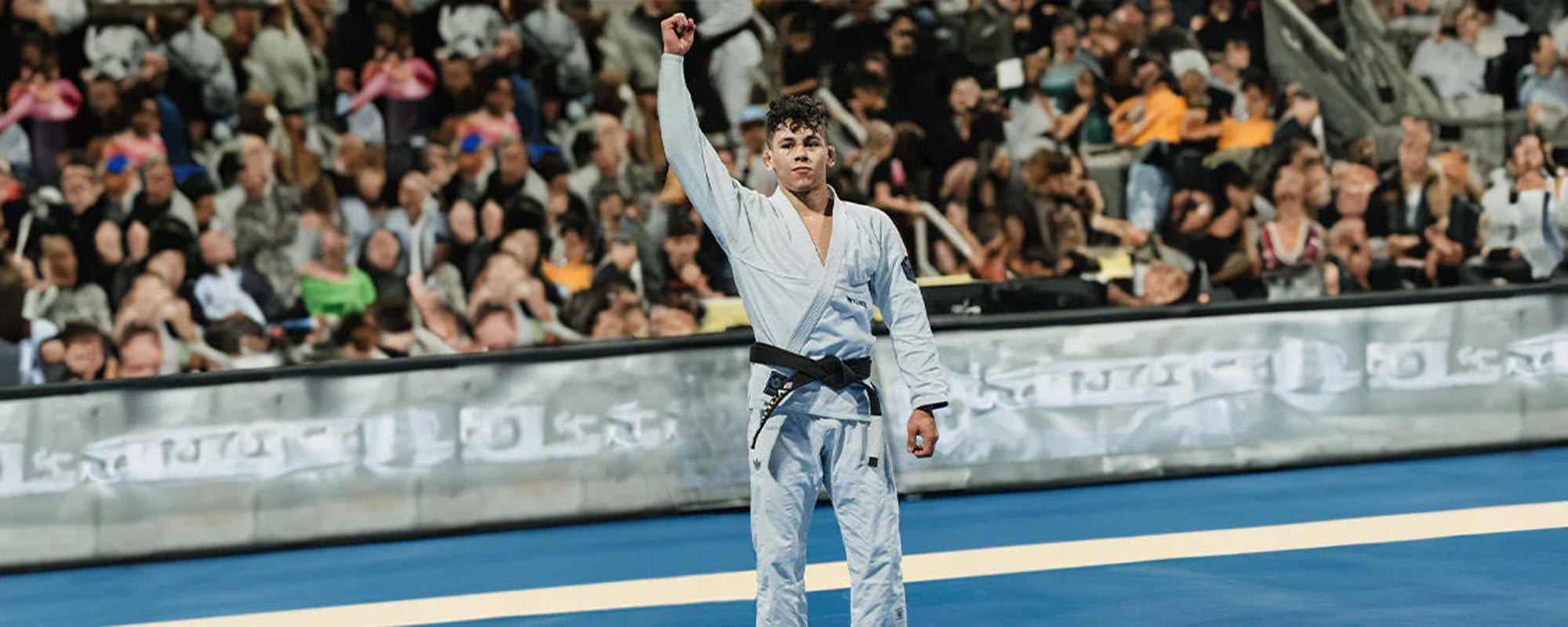Table of content

When learning BJJ, some people take less time to master BJJ techniques than other practitioners. These quick learners either have the natural talent or have prior experience doing sports.
BJJ is a combat sport that requires the practitioners to have strong muscles, cardio, flexibility, and alertness. A person into athletics and is more inclined to sports will have an easier time learning BJJ since their body is better adapted to physical activity. Beginners with no prior experience doing sports will often experience fatigue.
While all sports condition the human body, there are specific combat and non-combat sports that can help BJJ practitioners improve their training.
1. Combat Sports That Help with Learning BJJ
As BJJ is itself a combat sport, other combat sports can better condition your body to handle BJJ training and prepare you to learn how to execute BJJ techniques. Listed below are combat sports that can help practitioners in their BJJ training:
1.1. Judo
Brazilian jiu-jitsu and judo share the same origin. Both martial arts also share similar characteristics along with a few differences. BJJ focuses on grappling, while judo involves throwing. Judo can strengthen your muscles and help improve takedowns and grip in BJJ. Basic judo techniques that can help with BJJ training are ouchi gari, osoto gari, koshi guruma, o goshi, and sasae tsurikomi ashi.
Judo would benefit Gi BJJ athletes the most since it is also a sport that requires wearing and grappling with a uniform.
“Judo is the best in my opinion for someone who’s wearing clothes. I think every Jiu-Jitsu guy will greatly benefit from having a good comprehensive knowledge of Judo.”
1.2. Muay Thai
Muay Thai helps improve mental toughness and physical strength, both of which are necessary to do well in BJJ. Because Muay Thai is physically demanding, it can help condition the body to better handle exertion in BJJ.
Other benefits of training in both Muay Thai and BJJ are improved self-defense skills and versatile techniques. Muay Thai focuses on striking and can be helpful as a form of self-defense. Furthermore, combining two different martial arts gives you access to a variety of techniques.
1.3. Karate
Karate is a famous Japanese martial art with some of the best defensive techniques and counters. The main focus of karate is the fluidity of body movements and using your hands, knees, and elbows to strike.
Karate can help get your body in shape by burning excess fat in preparation for BJJ. Another benefit of karate for BJJ athletes is improved defense. With a flexible body, improved confidence, and a high fully attentive mind attained learning karate, BJJ athletes can easily defend against opponents' attacks and escape from any position.
1.4. Wrestling
Wrestling has a longer history than BJJ. Wrestling has ancient origins in several countries and is now an Olympic sport. Both fighting styles have various similarities. Wrestling is most like No-Gi BJJ as both do not need to grab onto uniforms to gain an advantage.
Wrestling can help BJJ athletes develop stronger grips, improve positioning, execute upper body submissions, and strengthen their base and standing positions.
2. Non-Combat Sports That Help with Learning BJJ
Non-combat sports play an important role in strengthening, conditioning, and improving flexibility in the body. Listed below are non-combat sports that can help BJJ athletes improve their training:
2.1. Gymnastics
In gymnastics, you learn tricks to maneuver your body in ways that help improve flexibility. Gymnastics also improve endurance, coordination, strength, and balance. Gymnasts are always aware of their body movements to ensure they maintain balance. Even the smallest mistake can result in severe injuries.
In BJJ strength training, some exercises are included that are part of gymnastic workouts. Such exercises include dips, handstand push-ups, ring dips, muscle-ups, planches, back levers, front levers, L-sits, bar dips, and pull-ups.
2.2. Swimming
Swimming involves moving every major muscle group in your body. When swimming, your muscles need oxygen to have enough energy to ensure exertion when traveling through water. This helps improve cardiac functioning, reduce weight, condition the body, strengthen and tone muscles, reduce the risk of illness, and regulate blood sugar levels.
2.3. Rock Climbing
Both rock climbing and BJJ place emphasis on upper body strength. Rock climbers have a strong grip when trying to grab onto and scale rocks of different shapes and sizes. This improved grip strength can be translated to BJJ when grappling opponents.
Rock climbing often requires athletes to pull their entire weight, which can be an effective way to build up arm strength. Similarly in BJJ, athletes often do push-ups to train their arms to support most of the body’s weight.
Rock climbing can also help toughen the muscles and help BJJ athletes bear uncomfortable positions and break free of submissions.
2.4. Board Sports
Board sports include surfing, skateboarding, or snowboarding. Board sports teach practitioners how to maintain their balance and posture when falling to reduce impact.
Beginners in BJJ usually start training to maintain balance while standing or on top of an opponent. However, having previous experience doing a board sport will help speed up the process of learning how to maintain balance.
2.5. Running
Running can help improve stamina and build leg strength, which can be useful in BJJ training. Running is the best way to accomplish aerobic and anaerobic conditioning and improve cardio in preparation for BJJ workouts. But running long distances can also cause pain in the leg muscle which could affect your performance on the mat. Instead, running short distances is the best way for BJJ athletes to condition themselves.
2.6. Rugby
Rugby involves players trying to tackle each other at high speed or drag down their opponents. These skills can help BJJ grapplers learn how to execute takedowns and wrestle opponents onto the ground. Furthermore, rugby teaches BJJ athletes how to overcome and dominate their opponents.
3. FAQs
1. Which combat sport did BJJ originate from?
Answer: BJJ originated from Japanese judo. Both judo and BJJ drew inspiration from Japanese jiu-jitsu.
2. Which sports can help to improve balance in BJJ?
Answer: Gymnastic and board sports like skateboarding, snowboarding, or surfing can help improve balance in BJJ.
4. Conclusion
BJJ is a combat sport where body strength and body conditioning are significant factors. BJJ athletes often train in other martial arts or non-combat sports to improve their strength, stamina, control, or balance.
Some practitioners started by practicing other martial arts before getting into BJJ. Previous martial arts training in wrestling, karate, judo, rugby, and Muay Thai can teach them valuable skills that can be used in BJJ.
Non-combat sports, like gymnastics and board sports, can help BJJ athletes improve their balance. Rock climbing strengthens muscles and ensures a strong grip. Running can improve cardio and aerobic and anaerobic respiration.












Leave a comment
This site is protected by hCaptcha and the hCaptcha Privacy Policy and Terms of Service apply.